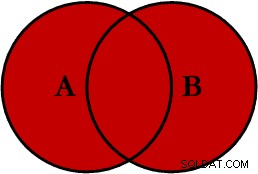CTE ricorsivo con ordinamento speciale. Nota l'override di ordinamento nei figli di 2 (ho modificato leggermente la tabella di origine per testare questa capacità)
declare @relations table(ParentID int, ChildID int, SortOrder int, treeID int);
insert into @relations values
(0,1,0,0), (1,2,1,0), (2,3,2,0), (2,4,1,0), (2,6,3,0), (1,7,2,0), (1,9,3,0), (9,10,1,0), (9,12,2,0) --tree 0
, (0,1,0,1), (1,2,1,1), (2,3,2,1), (2,4,1,1), (2,6,3,1), (1,7,2,1), (1,9,3,1), (9,10,1,1), (9,12,2,1) --tree 1
; with cte(ParentId,ChildId,SortOrder,depth,agg,treeID) as (
select null,ParentId,SortOrder,0
, right('0000000'+CAST(treeID as varchar(max)),7)
+right('0000000'+CAST(SortOrder as varchar(max)),7)
, treeID
from @relations where ParentId=0
union all
select cte.ChildId,r.ChildId,r.SortOrder,cte.depth+1
, cte.agg
+right('0000000'+CAST(r.treeID as varchar(max)),7)
+right('0000000'+CAST(r.SortOrder as varchar(max)),7)
+right('0000000'+CAST(r.ChildId as varchar(max)),7)
, r.treeID
from cte
inner join @relations r on r.ParentID=cte.ChildId
where cte.depth<32767
and r.treeID=cte.treeID
)
select
tree=case depth when 1 then cast(ParentID as varchar(30))+' (sort '+cast(SortOrder as varchar(30))+')'
else REPLICATE(CHAR(9),depth-1)
+ cast(ChildId as varchar(30))+' (sort '+cast(SortOrder as varchar(30))+')'
end
from cte
where depth>0
order by agg
option (maxrecursion 32767);
Risultato:
tree
--------------------------------------------------
0 (sort 0)
2 (sort 1)
4 (sort 1)
3 (sort 2)
6 (sort 3)
7 (sort 2)
9 (sort 3)
10 (sort 1)
12 (sort 2)
0 (sort 0)
2 (sort 1)
4 (sort 1)
3 (sort 2)
6 (sort 3)
7 (sort 2)
9 (sort 3)
10 (sort 1)
12 (sort 2)




